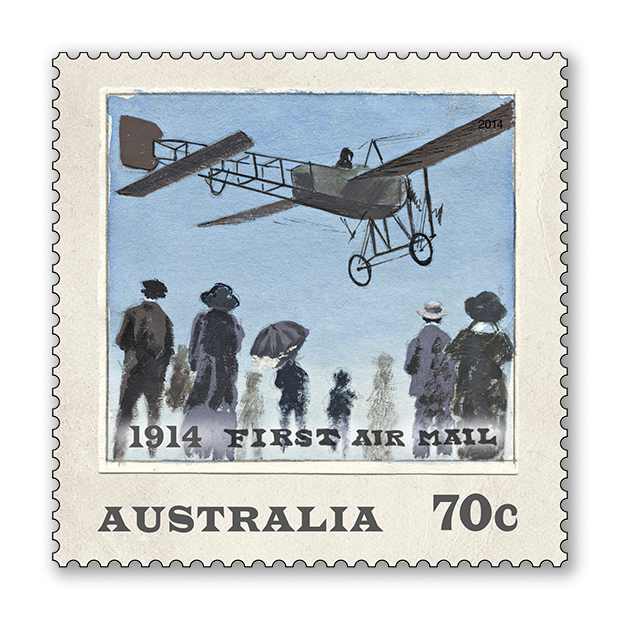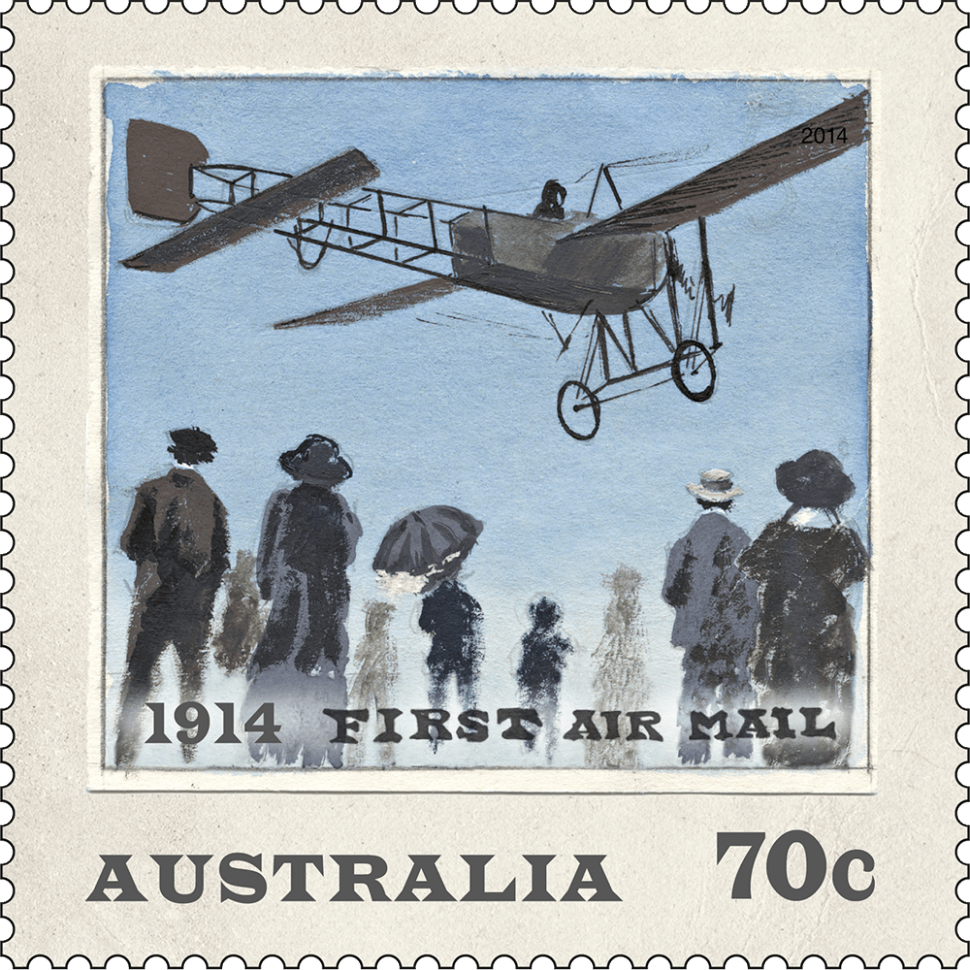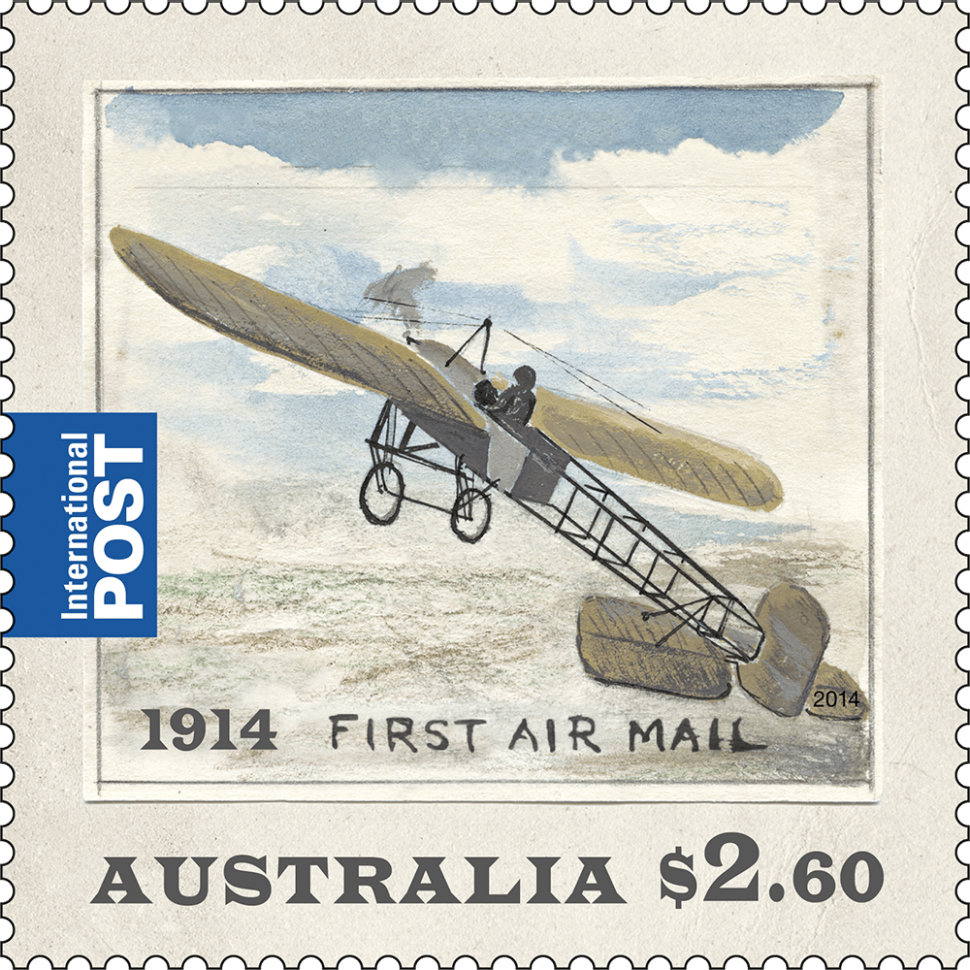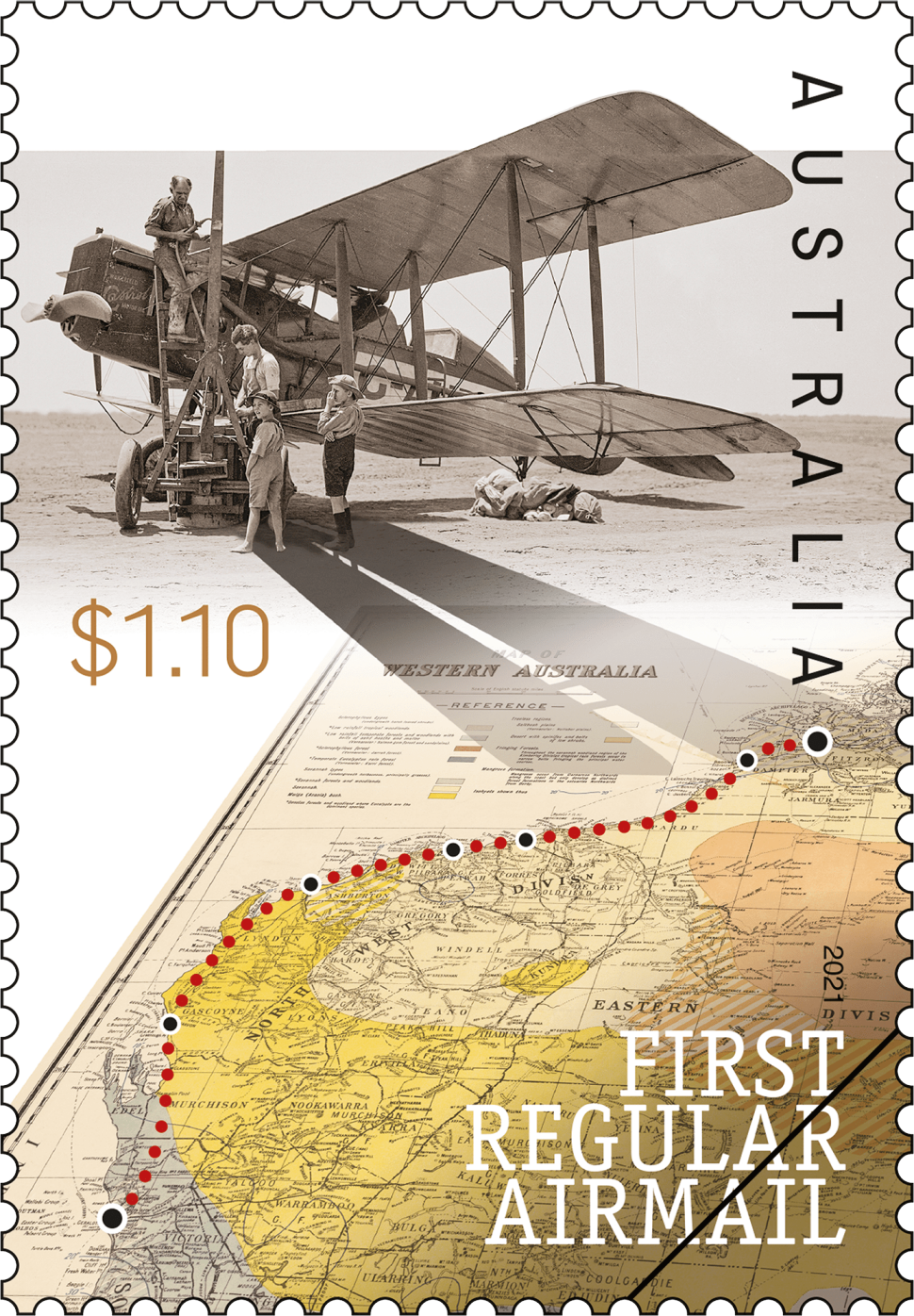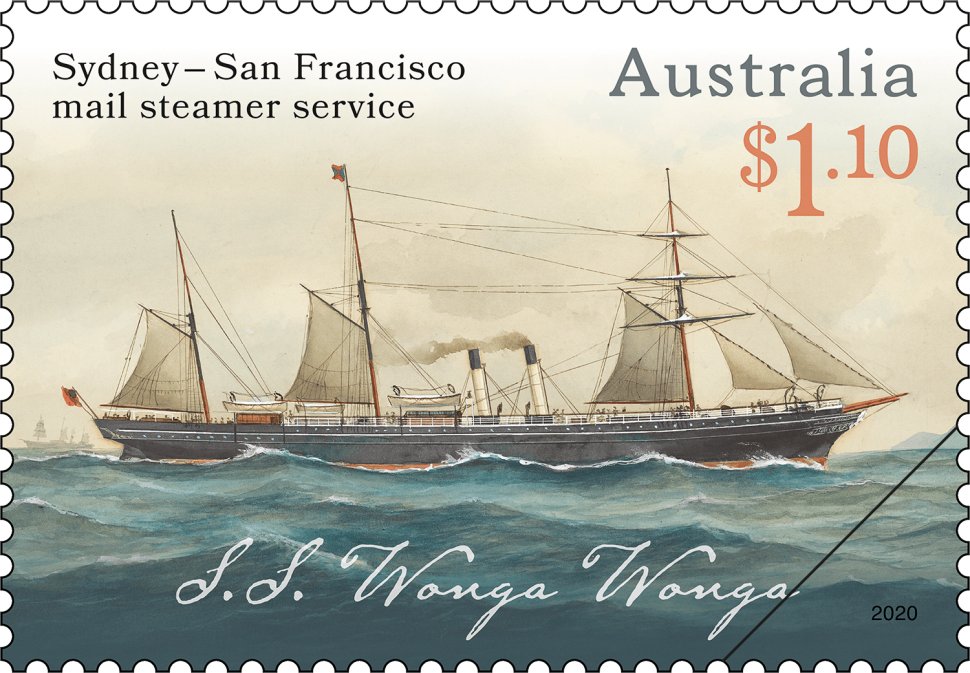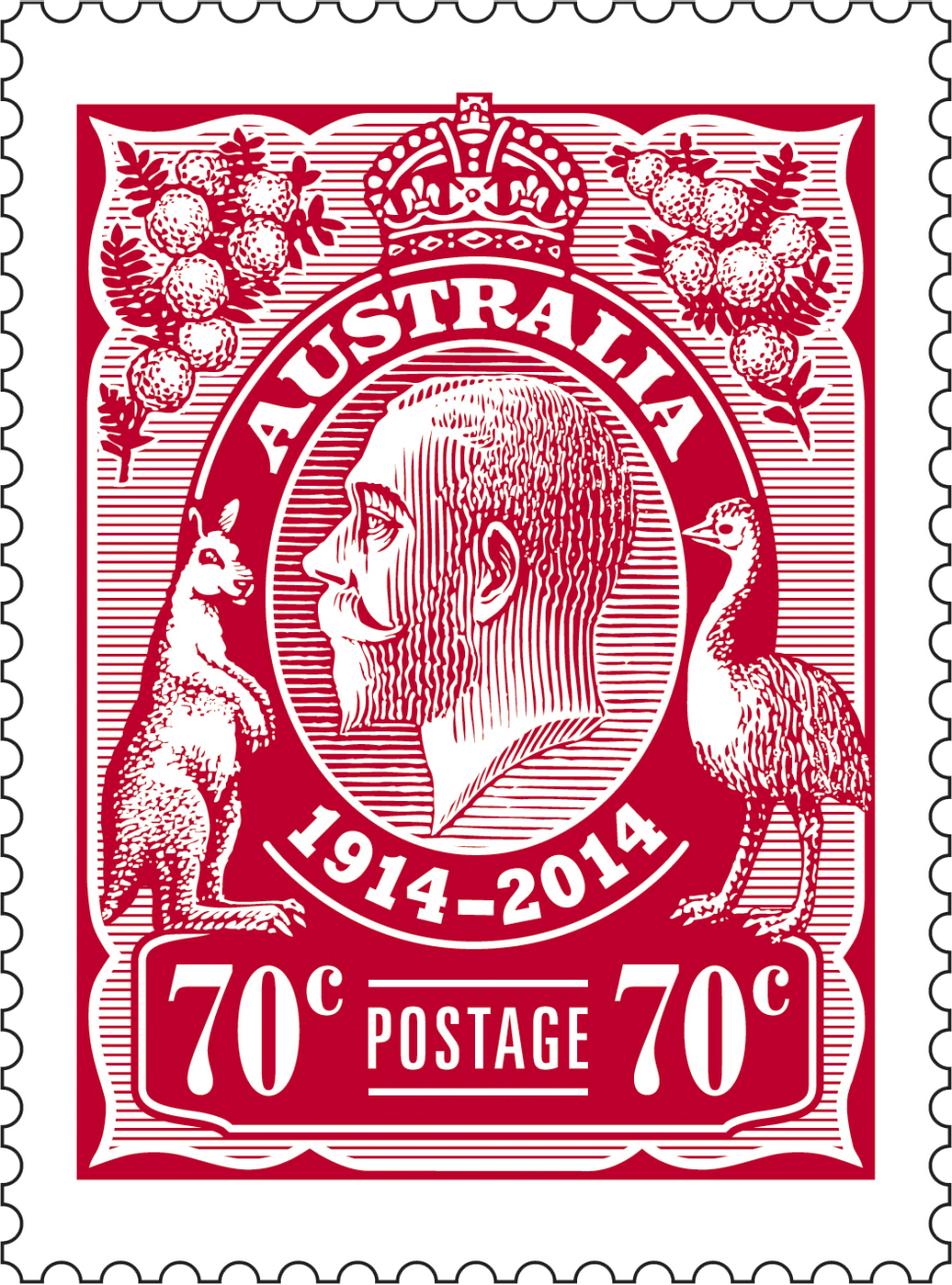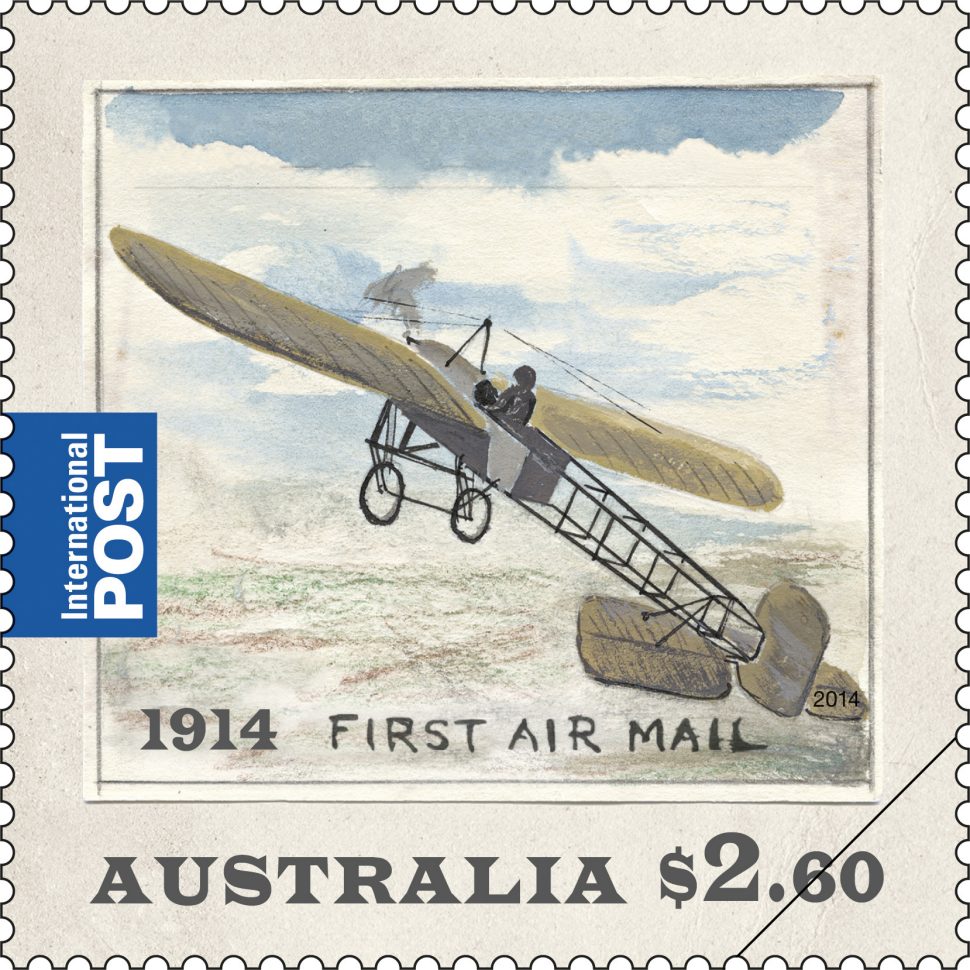Between 16 and 18 July 2014 it will be 100 years since French aviator and aerial stuntman Maurice Guillaux (1883–1917) made the first air mail flight in Australia, while in Australia on tour. He left the Melbourne Agricultural Grounds at 9.12am on 16 July bound for Sydney, stopping at Seymour, Wangaratta, Albury, Wagga Wagga, Harden, Goulburn and Liverpool en route. Strong head winds at Harden twice necessitated his return, as well as an overnight stay.
While Moss Vale was on his original itinerary, the lack of a suitable landing space on the golf course saw him continue on to nearby Liverpool before reaching his final destination. He landed at Moore Park (Sydney Sports Ground) at 2.50pm on 18 July, two days after his departure from Melbourne; the flying time, however, was just 9.5 hours. On his arrival, Guillaux was welcomed by Governor-General Sir Ronald Munro Ferguson.
Guillaux’s flight was, at the time, the longest air mail flight worldwide. He carried a cargo of 1,785 souvenir postcards, official letters between the state governors and French consuls, and a small number of parcels. His load was light, for his Bleriot XI monoplane was essentially constructed of “wood and fabric held together with wire and glue” and powered by a Gnôme rotary engine of around just 50 horse power. The postcards had been produced by the British Imperial Oil Company (Shell Australia), which had also supplied the fuel for the flight. A quantity of Lipton’s tea and OT chilli cordial and lemon squash, consigned to the Commercial Travellers’ Association (Tennis) Club of Sydney, became the first air cargo carried between the two cities. The underside of the Bleriot’s wings featured the wording “ADD a little O.T.”
Guillaux performed aerial displays in Australia (he is said to have performed the first loop-the-loop here) until his plane was badly damaged at a demonstration in Sydney’s Ascot Racecourse on 3 August 1914, leaving him with a six-week recovery in hospital. Soon after, Guillaux returned to France, the Great War having been declared just the day after his accident. His Bleriot remained in Australia and is now in the collection of the Powerhouse Museum. Guillaux was killed during a flying accident in 1917.
In 1964, the Postmaster-General’s Department developed a stamp issue to mark the 50th anniversary of this significant development in Australia’s postal service. The stamp designs in this current issue are based on aviation enthusiast and Postmaster-General Department employee Kevin McKay’s early watercolour “sketches” for the 50th-anniversary designs.
The simple, almost whimsical hand-drawn quality of these illustrations reflects the relative simplicity of the aeronautical technology of the era and emphasises the historical distance we have travelled since that inaugural air mail flight.
Products released in this issue
- Stamps 1 x 70c, 1 x $2.60
- Minisheet
- Covers (blank pictorial, gummed and minisheet)
- Stamp pack
- Maxicard
- Postal numismatic cover
- Prestige booklet
- Souvenir cover (with badge)
- Gutter strips
Technical specifications
- Issue date
- 1 July 2014
- Issue withdrawal date
- 31 January 2015
- Denominations
- 1 x 70c, 1 x $2.60
- Stamp design
- Jo Mure, Australia Post Design Studio
- Product design
- Jo Mure, Australia Post Design Studio
- Illustrator
- Kevin Mckay
- Paper - gummed
- Tullis Russell
- Printer - gummed
- McKellar Renown
- Stamp size
- 26mm x 37.5mm
- Minisheet size
- 135mm x 80mm
- Perforations
- 14.28 x 14.28
- Sheet layout
- Module of 50
- FDI postmark
- Flemington, Vic 3031
- FDI withdrawal date
- 29 July 2014
With powered flight making its debut in Australia only four years before, Guillaux’s historic air mail flight, just like his many aerial demonstrations, were very much a drawcard for an interested public. This stamp design depicts the aviator in his monoplane above the heads of transfixed spectators.
This content was produced at the time of the stamp issue release date and will not be updated.

